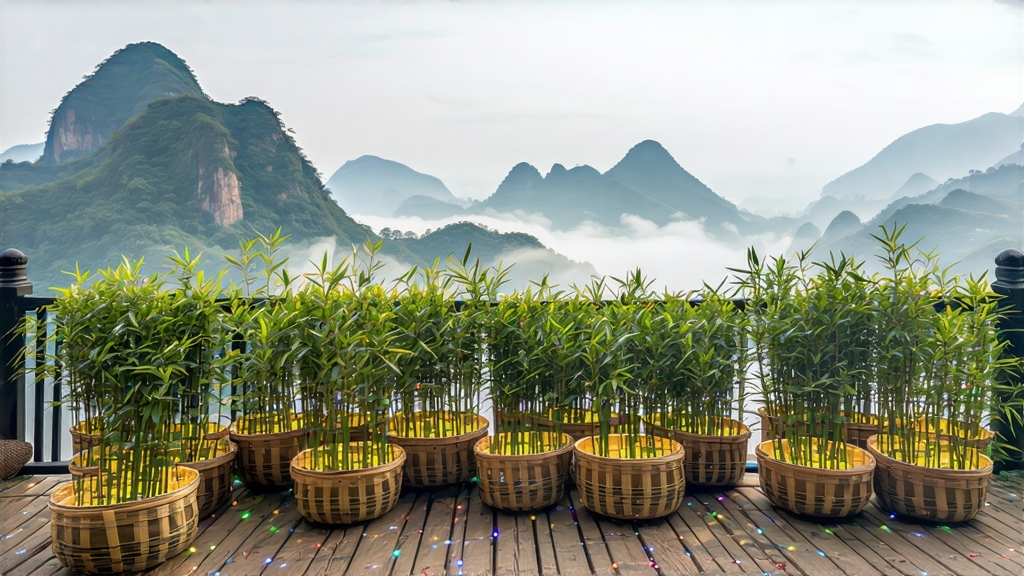
Tucked high in the mist-veiled Dabie Mountains of western Anhui province, Huoshan Huangya has been whispered about in Chinese tea circles for more than two millennia. Foreign drinkers often greet the name with a polite nod, assuming it is simply “another yellow tea,” yet once the first sip coats the palate they discover a liquor that tastes like candied apricot drifting across a spring meadow. This essay invites the global tea lover to step beyond the label and meet the leaf that once traveled in sedan chairs to the Forbidden City, the bud that demanded its own imperial storehouse, and the craft that still relies on the muscle memory of fewer than two-dozen living masters.
-
A leaf born of legend
Local chronicles credit the Han-dynasty sage Huo Qubing with discovering the wild tea growing beneath the granite cliffs of Huoshan. Whether myth or marketing, what is documented is that by the Tang dynasty (618-907 CE) the prefecture of Shouzhou, of which Huoshan was part, already paid its annual tax in compressed tea cakes. When the Song emperor Huizong—a painter, calligrapher and notorious tea obsessive—sampled the bright yellow infusion in 1107, he declared it “imperial fragrance” (御香 yù xiāng) and exempted the county from grain tax in exchange for 300 jin of the bud alone. The Ming shifted tribute from cake to loose leaf, and the Qing Qianlong Emperor so adored the honeyed finish that he allegedly refused water from any other source while touring the Yangtze. Thus Huoshan Huangya entered the canon of “gong cha” (tribute tea), a status it held uninterrupted until the fall of the empire in 1911. -
Micro-terroir in the Dabie range
Huoshan county lies at 31° N, 800–1,200 m above sea level. The granite massif traps humid air from the Yangtze floodplain, creating 220 fog-bound days each year. The short-wave ultraviolet light filtered through these clouds forces the tea bush (predominantly a small-leaf seedling population named “金鸡种 jinji zhong”) to synthesize more theanine and less catechin, gifting the tea its hallmark sweetness and low astringency. Soils are yellow-brown laterite, acidic (pH 4.8–5.2) and laced with quartz; drainage is so rapid that roots dive two metres, mining minerals that translate into a subtle stone-fruit note in the cup. The county’s bamboo forests also supply the fuel—four-year-old mao bamboo that burns at 600 °C yet releases almost no resinous smoke—critical to the final firing stage. -
The triad of yellow teas
Western texts often lump any tea that looks yellow into one basket, but Chinese taxonomists recognise three distinct styles:
a) Mengding Huangya from Sichuan—aromatic, early-spring, lightly fermented.
b) Junshan Yinzhen from Hunan—silver-needle shape, lake air cured.
c) Huoshan Huangya—bud-and-one-leve pluck, bamboo-basket “menhuang,” and double charcoal bake.
Each style uses a different cultivar, microclimate and finishing technique; connoisseurs compare them to the difference between Meursault and Chablis rather than between two Chardonnays. -
Harvest calendar: the 48-hour window
The picking season opens on the first day the local mean temperature stabilises above 10 °C, usually between 20–25 March. Only the bud and the first unfolding leaf, 15–20 mm in total length, are taken. A skilled picker can gather 600 g of fresh leaf in a dawn shift; 4.2 kg of this becomes 1 kg of finished tea. If rain has fallen within 12 hours, plucking is delayed another day to avoid “watery” leaf that refuses to yellow properly. Thus the entire spring harvest often compresses into a frantic 48-hour window. -
The craft: seven steps, five of which are still done by hand
Step 1: Sha Qing (kill-green) – 90 s in a 160 °C wok, hand tossed 48 times to deactivate polyphenol oxidase while preserving the yellow-green hue.
Step 2: Chu Tan – initial rolling for 3 minutes under 4 kg of